Okta SAML Implementation
This article contains Okta-specific help for configuring Login with SSO via SAML 2.0. For help configuring login with SSO for another IdP, refer to SAML 2.0 Configuration.
Configuration involves working simultaneously within the Bitwarden web app and the Okta Admin Portal. As you proceed, we recommend having both readily available and completing steps in the order they are documented.
tip
Already an SSO expert? Skip the instructions in this article and download screenshots of sample configurations to compare against your own.
Log in to the Bitwarden web app and open the Admin Console using the product switcher:

Open your organization's Settings → Single sign-on screen:
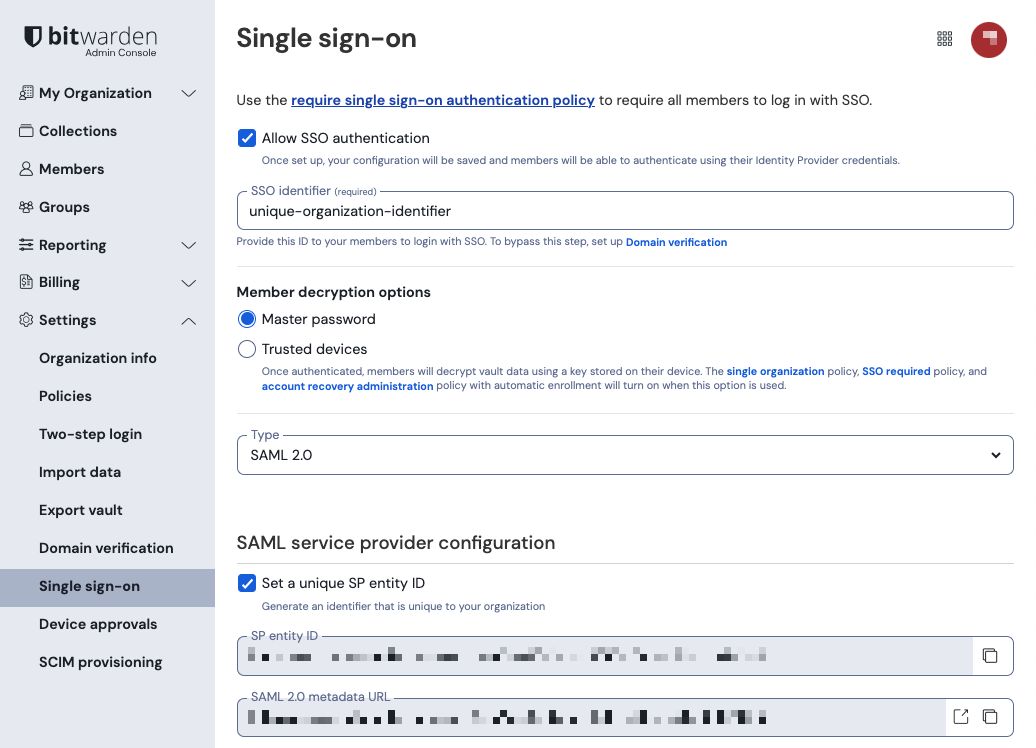
If you haven't already, create a unique SSO identifier for your organization and select SAML from the the Type dropdown. Keep this screen open for easy reference.
You can turn off the Set a unique SP entity ID option at this stage if you wish. Doing so will remove your organization ID from your SP entity ID value, however in almost all cases it is recommended to leave this option on.
tip
There are alternative Member decryption options. Learn how to get started using SSO with trusted devices or Key Connector.
In the Okta Admin Portal, select Applications → Applications from the navigation. On the Applications screen, select the Create App Integration button:
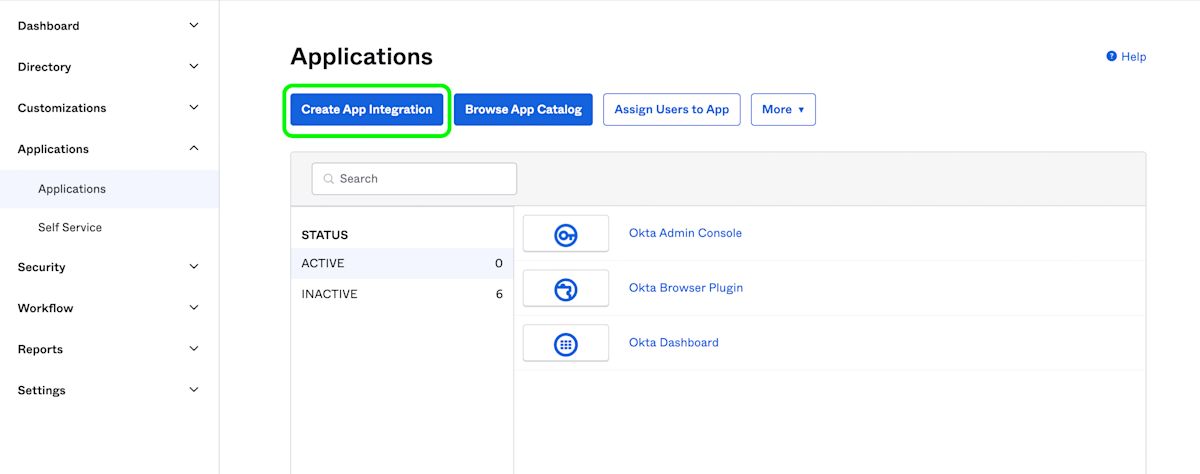
In the Create a New Application Integration dialog, select the SAML 2.0 radio button:
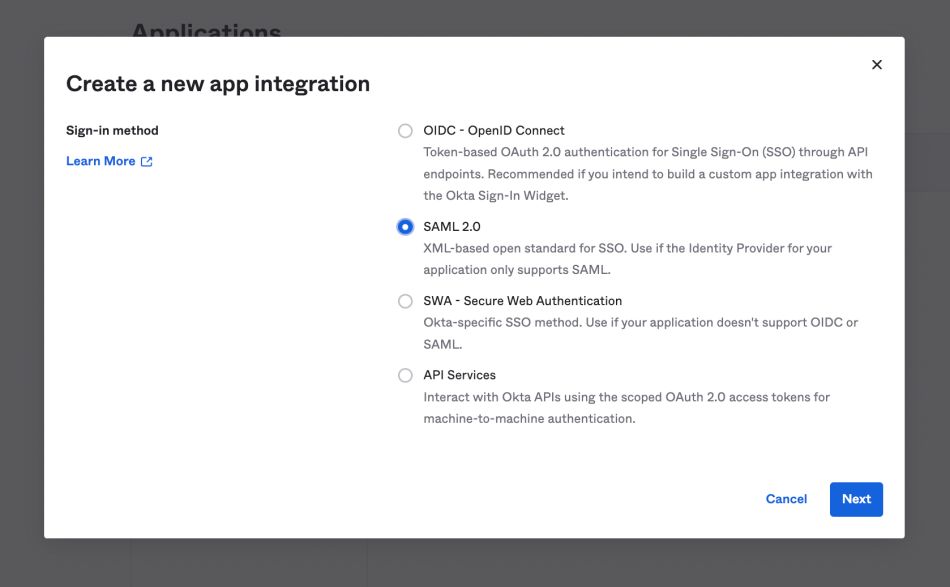
Select the Next button to proceed to configuration.
On the General Settings screen, give the application a unique, Bitwarden-specific name and select Next.
On the Configure SAML screen, configure the following fields:
Field | Description |
|---|---|
Single sign on URL | Set this field to the pre-generated Assertion Consumer Service (ACS) URL. This automatically-generated value can be copied from the organization's Settings → Single sign-on screen and will vary based on your setup. |
Audience URI (SP Entity ID) | Set this field to the pre-generated SP Entity ID. This automatically-generated value can be copied from the organization's Settings → Single sign-on screen and will vary based on your setup. |
Name ID format | Select the SAML NameID format to use in SAML assertions. By default, Unspecified. |
Application username | Select the Okta attribute users will use to login to Bitwarden, typically Email. |
Select the Show Advanced Settings link and configure the following fields:

Field | Description |
|---|---|
Response | Whether the SAML response is signed by Okta. |
Assertion Signature | Whether the SAML assertion is signed by Okta. |
Signature Algorithm | The signing algorithm used to sign the response and/or assertion, depending on which is set to Signed. By default, |
Digest Algorithm | The digest algorithm used to sign the response and/or assertion, depending on which is set to Signed. This field must match the selected Signature Algorithm. |
In the Attribute Statements section, construct the following SP → IdP attribute mappings:
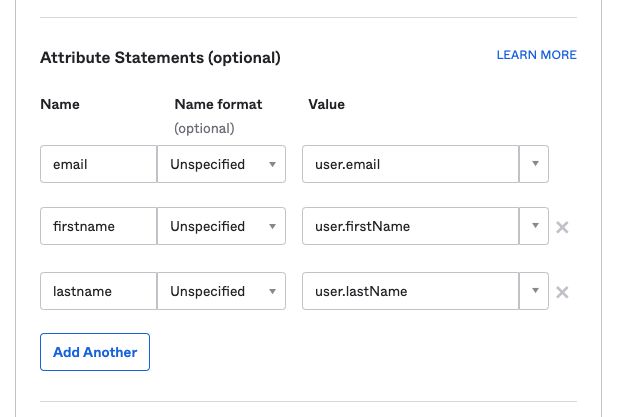
Once configured, select the Next button to proceed to the Feedback screen and select Finish.
Once your application is created, select the Sign On tab for the app and select the View Setup Instructions button located on the right side of the screen:
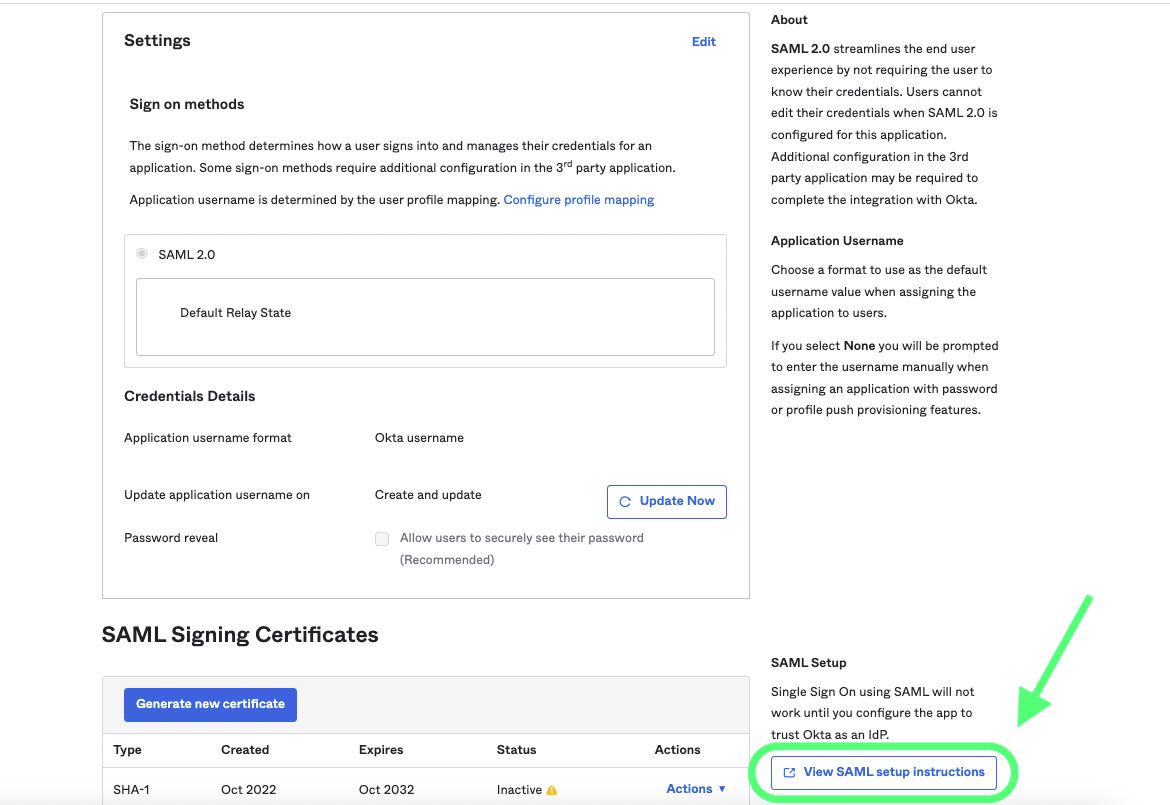
Either leave this page up for future use, or copy the Identity Provider Single Sign-On URL and Identity Provider Issuer and download the X.509 Certificate:

Navigate to the Assignments tab and select the Assign button:
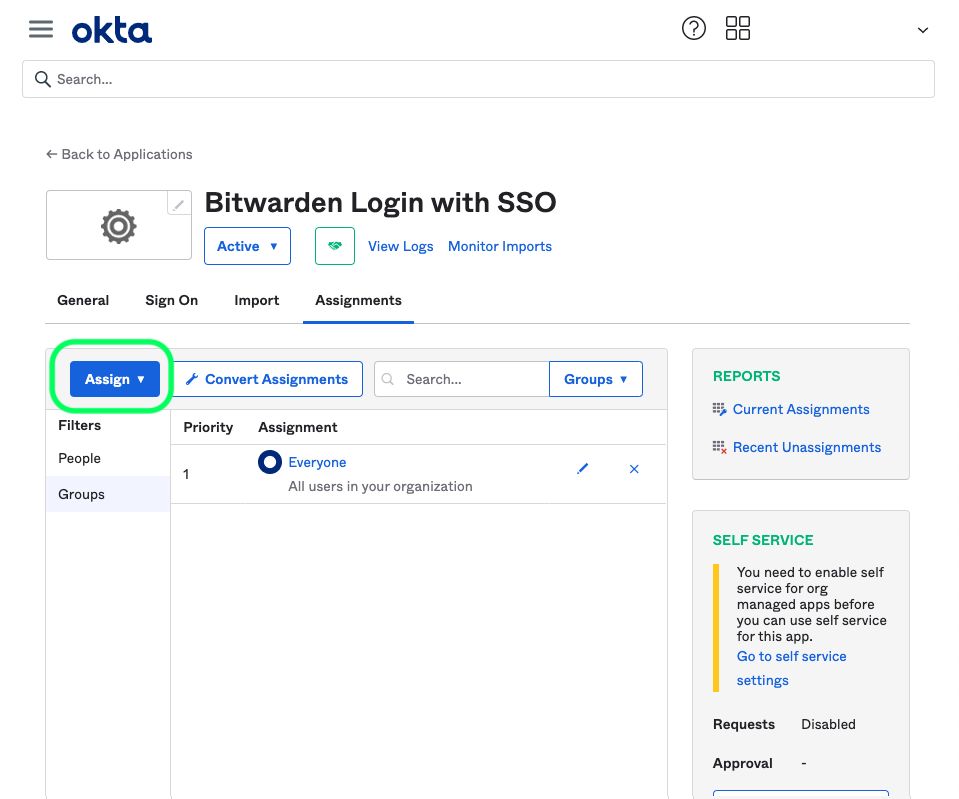
You can assign access to the application on a user-by-user basis using the Assign to People option, or in-bulk using the Assign to Groups option.
At this point, you have configured everything you need within the context of the Okta Admin Portal. Return to the Bitwarden web app to complete configuration.
The Single sign-on screen separates configuration into two sections:
SAML service provider configuration will determine the format of SAML requests.
SAML identity provider configuration will determine the format to expect for SAML responses.
Configure the following fields according to the choices selected in the Okta Admin Portal during app creation:
Field | Description |
|---|---|
Name ID format | Set this to whatever the Name ID format specified in Okta, otherwise leave Unspecified. |
Outbound signing algorithm | The algorithm Bitwarden will use to sign SAML requests. |
Signing behavior | Whether/when SAML requests will be signed. |
Minimum incoming signing algorithm | Set this to the Signature Algorithm specified in Okta. |
Expect signed assertions | Check this box if you set the Assertion Signature field to Signed in Okta. |
Validate certificates | Check this box when using trusted and valid certificates from your IdP through a trusted CA. Self-signed certificates may fail unless proper trust chains are configure within the Bitwarden login with SSO docker image. |
When you're done with the service provider configuration, Save your work.
Identity provider configuration will often require you to refer back to the Okta Admin Portal to retrieve application values:
Field | Description |
|---|---|
Entity ID | Enter your Identity Provider Issuer, retrieved from the Okta Sign On Settings screen by selecting the View Setup Instructions button. This field is case sensitive. |
Binding Type | Set to Redirect. Okta currently does not support HTTP POST. |
Single Sign On Service URL | Enter your Identity Provider Single Sign-On URL, retrieved from the Okta Sign On Settings screen. |
Single Log Out Service URL | Login with SSO currently does not support SLO. This option is planned for future development, however you may pre-configure it if you wish. |
X509 Public Certificate | Paste the downloaded certificate, removing
and |
Outbound Signing Algorithm | Select the Signature Algorithm selected during Okta app configuration. If you didn't change the Signature Algorithm, leave the default ( |
Allow outbound logout requests | Login with SSO currently does not support SLO. |
Want Authentication Requests Signed | Whether Okta expects SAML requests to be signed. |
note
When completing the X509 certificate, take note of the expiration date. Certificates will have to be renewed in order to prevent any disruptions in service to SSO end users. If a certificate has expired, Admin and Owner accounts will always be able to log in with email address and master password.
When you're done with the identity provider configuration, Save your work.
tip
You can require users to log in with SSO by activating the single sign-on authentication policy. Please note, this will require activating the single organization policy as well. Learn more.
Once your configuration is complete, test it by navigating to https://vault.bitwarden.com, entering your email address and selecting the Enterprise Single-On button:
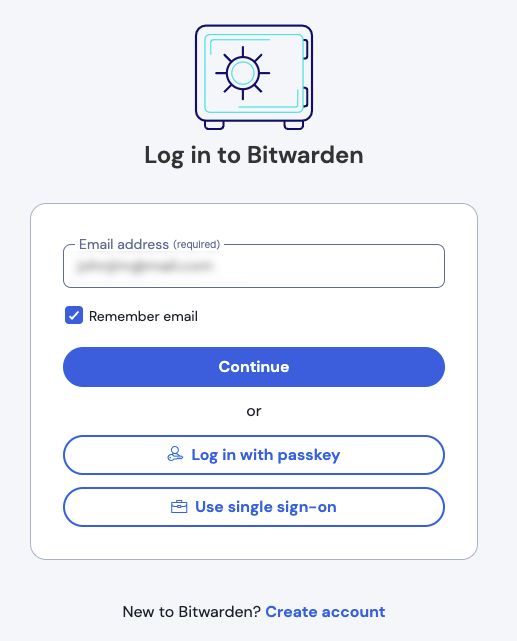
Enter the configured organization identifier and select Log In. If your implementation is successfully configured, you will be redirected to the Okta login screen:
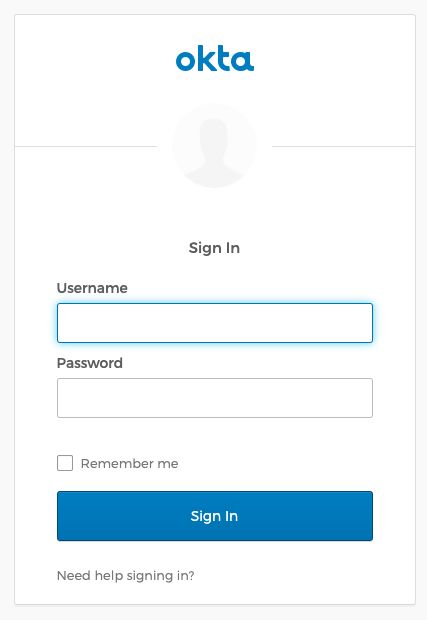
After you authenticate with your Okta credentials, enter your Bitwarden master password to decrypt your vault!
note
Bitwarden does not support unsolicited responses, so initiating login from your IdP will result in an error. The SSO login flow must be initiated from Bitwarden. Okta administrators can create an Okta Bookmark App that will link directly to the Bitwarden web vault login page.
As an admin, navigate to the Applications drop down located on the main navigation bar and select Applications.
Click Browse App Catalog.
Search for Bookmark App and click Add Integration.
Add the following settings to the application:
Give the application a name such as Bitwarden Login.
In the URL field, provide the URL to your Bitwarden client such as
https://vault.bitwarden.com/#/loginoryour-self-hostedURL.com.
Select Done and return to the applications dashboard and edit the newly created app.
Assign people and groups to the application. You may also assign a logo to the application for end user recognition. The Bitwarden logo can be obtained here.
Once this process has been completed, assigned people and groups will have a Bitwarden bookmark application on their Okta dashboard that will link them directly to the Bitwarden web vault login page.